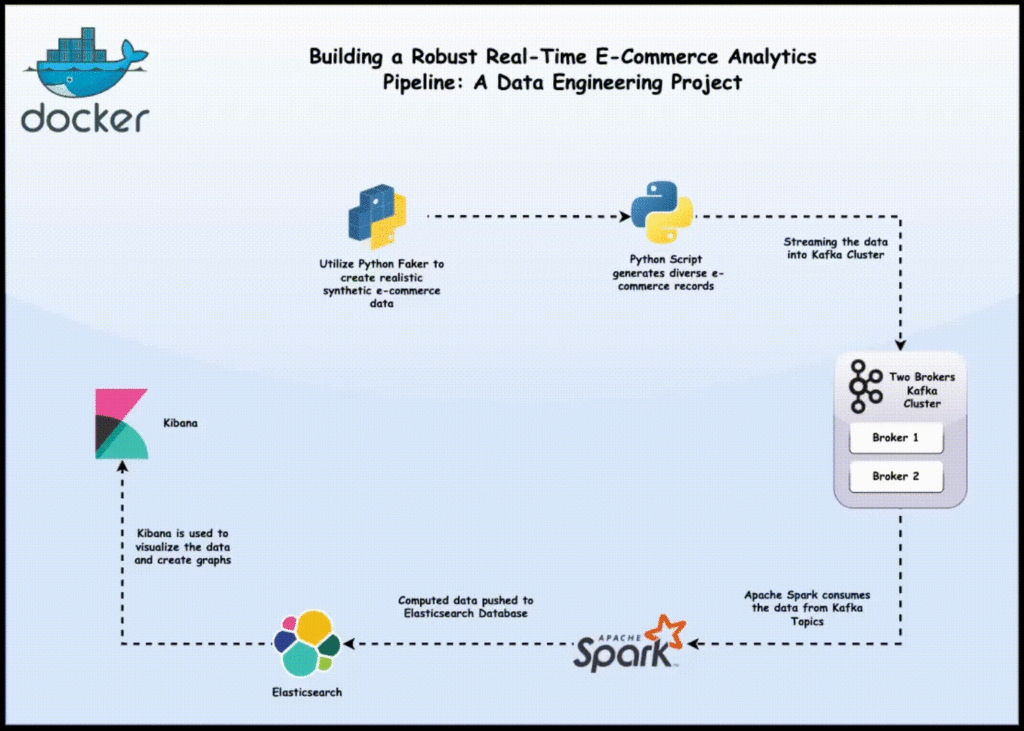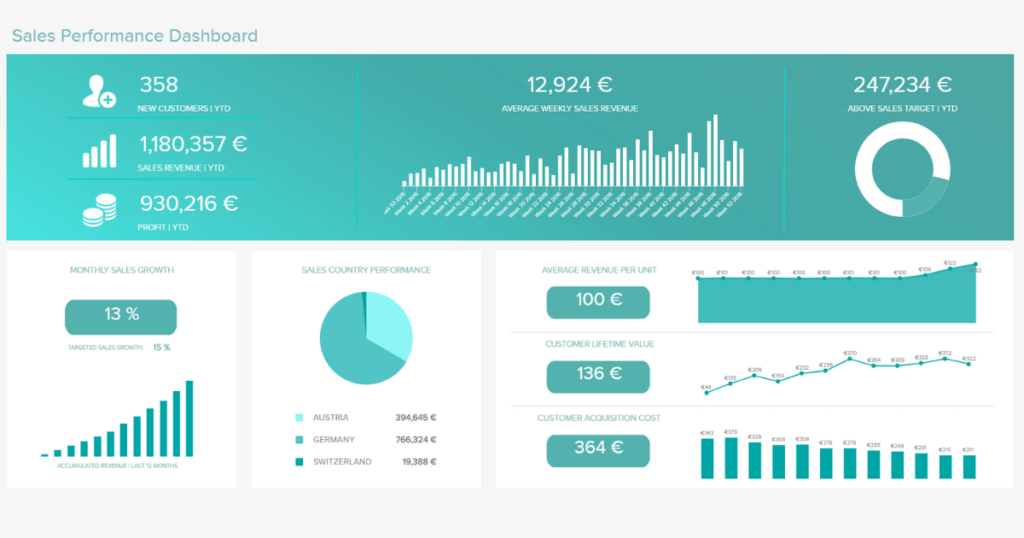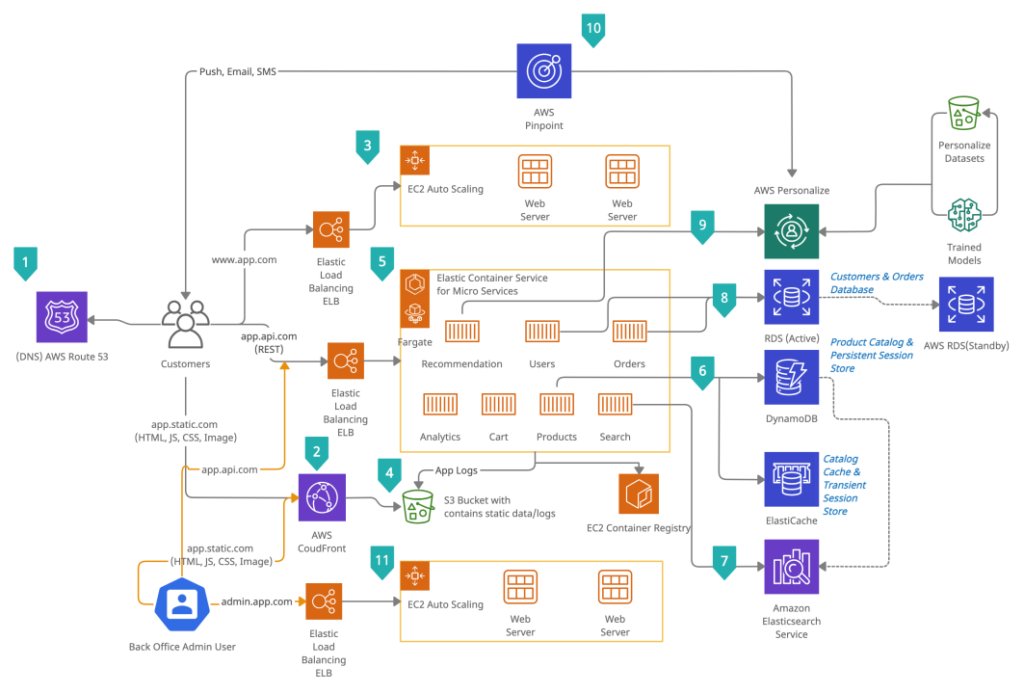A successful eCommerce business goes beyond exceptional content delivery, seamless checkout functionalities, or futuristic-looking websites.
It requires you to collect and analyze data and then make data-driven decisions. A reliable data architecture is a core part of this bigger puzzle.
Data architecture collects all essential data in one place and format. It maps out how your eCommerce data flows within the organization and integrates with other cloud applications, customer service platforms, marketing, etc., giving you an in-depth understanding of how customers interact with your business.
In this article, we’ll explore five steps to optimize your eCommerce operation using data architecture — the right way. We will also discuss how you can streamline your data architecture process like a pro.
Table of Contents
Let’s jump in.
5 Steps to Creating a Strong Data Architecture Foundation
Optimizing eCommerce operations starts with building a data architecture to support your data needs, personalize customer experience, and aid resource allocation.
Above all, a streamlined eCommerce data architecture is your golden beacon for making data-driven decisions.
It’s especially important as more organizations rely on data — 65% of organizations will be fully data-driven by 2026 — to fine-tune their operations and beyond.
Now, with that in mind, here are five steps to creating a data architecture for your business.
Step #1: Define Your Data Goals
Define your data architecture goals by jotting down the metrics, data types, and points you aim to gather to inform other elements of your eCommerce operation. It should include:
- Key performance indicators: conversion rates, inventory turnover, customer lifetime value
- Customer data: email, address, order count, marketing opt-in
- Orders: order IDs, currency, payment gateways
- Common app data: advertising, customer service, socials
Defining these parameters will help you tailor your data architecture to collect and analyze information relevant to your primary objectives: optimizing eCommerce operations and improving the overall user experience.
Step #2: Choose Your Data Warehouse
Analytical tools are a vital element of optimizing eCommerce operations, and data warehouses help you utilize these tools by storing and managing massive amounts of data.
While you can locally store and manage your data initially, you’ll have to invest in a reliable data warehouse platform as your business grows. However, before purchasing, take note of:
- The amount of data you collect
- Data ingestion frequency
- Data pipeline
- Pricing
Google BigQuery, Amazon Redshifts, and Snowflake are good data warehouse platform options for storing and analyzing your data. However, ensure your warehouse platform is compatible with all your other eCommerce operation products.
For example, Snowflake is an excellent option for businesses that use Google products to replicate their PostgreSQL database because of its seamless integration ability.
Here are some data points you can include in your eCommerce data warehouse:
- Digital data, such as users, traffic, visits, and pageviews (from Adobe Analytics, Google Analytics, etc.)
- Email marketing data (from Constant Contact, Mailchimp, etc.)
- CRM data (from Salesforce, Marketo, etc.)
- Customer service data (from Zendesk, Twitter help, your chatbots, phones, and more)
- Third-party data (from Dun & Bradstreet, etc.)
Step #3: Build Your Data Pipeline
With the data warehouse ready, it’s time to move your data from source to destination — that’s where the data pipeline comes in.
A data pipeline automates the data collection from multiple sources in a predetermined format. The pipeline then sends all the collected insights to your data warehouse, which will be stored, manipulated into information, and analyzed.
Here is a brief outline of how to design your data pipeline:
- Create a connection between sources and destination
- Select and move the desired data from the sources
- Employ eCommerce data cleansing and enrichment to remove duplicates and null value data
- Transform the data into information you can use at the destination
- Connect the pipeline and send the transformed information to your data warehouse for storage and future use
[Source: Medium]
However, there is more to a data pipeline than design.
You must also ensure it integrates well with your data warehouse and dashboard elements, such as:
- Historical data. The amount of data you want to load at start, months, years, or all-time. Ideally, you want to load as much as possible to get the best picture of your eCommerce operations.
- Sync frequency. How often should the new data be sent to the destination (warehouse)? For most eCommerce businesses, a sync frequency of once per day is sufficient. However, you can even choose hourly syncs for larger businesses with heavier data loads.
- Which data? Not every data point will be crucial for your business. Here, use discretion. Choose only the most relevant metric. This will help avoid any cluttering in your data warehouse and dashboard.
- Data updating. Different data storage strategies load data into the warehouse or dashboard. Decide how these will be updated from your pipeline to the warehouse.
These integrations are critical when creating an eCommerce marketplace, since data will flow in through various pipelines — vendors, suppliers, and internal systems.
A robust data architecture will seamlessly integrate and synchronize data across different sources, thus creating a unified view of your eCommerce operations (inventory management, pricing optimization, order fulfillment, etc.).
Fortunately, there are data integration platforms to do this heavy lifting for you.
With the right data architecture tools like Stitch Data, Matillion, and Fivetran, you can centerline your eCommerce data pipeline with customizable analyses, metrics, and reporting to power your business growth.
Step #4: Shape Your Data Dashboard
An optimized eCommerce operation thrives on effective data visualization. AKA, data dashboards.
A well-designed data dashboard provides invaluable insights into diverse data points, including product listings, seller performance metrics, customer feedback, and more, for streamlining operations.
Thus, once the backend (data warehouse and pipeline) is set up, start designing an intuitive and logical data dashboard.
You can even create a mobile app for your eCommerce data dashboard using a cross-platform development framework like Flutter or React Native. This will allow you to receive real-time notifications and alerts about KPIs, sales trends, and inventory levels, and smooth out the overall eCommerce operation.
But, irrespective of what you choose, keep note of these six crucial principles when creating your eCommerce data dashboard:
- Structure. Divide data into different dashboards for specific users (analysts, marketing teams, management, etc.).
- Navigation. Provide easy navigation that enables users to seamlessly move between different dashboards and sections (menus, links, tooltips, and drills).
- Hierarchy. Create visual and logical hierarchies that work together to create effective and user-friendly designs.
- Grouping. Batch similar data together, allowing users to compare and contrast different statistics and trends on the spot.
- Labeling. Design clear, concise, and consistent labels for each dashboard. This will help users better understand what each metric and trend represents.
- Filtering. Add filters that let users sift only through the most relevant information by adding drop-down menus.
Here’s an example from datapine.
[Source: datapine]
When creating the dashboard, you can also use AI tools for eCommerce to shoulder the work.
For example, you can leverage StoreYa’s AI product description generators to maximize efficiency. These generators generate product descriptions, titles, and meta descriptions in seconds to kickstart your product pages.
Step #5: Continuously Optimize and Improve
You want to regularly monitor KPIs related to data collection, processing, and analysis. With it, you can easily identify areas of inefficiency in the data pipeline, warehouse, or dashboard, and thus address them.
Even better, allow your team to set SMART goals for work (Specific, Measurable, Achievable, Relevant, and Time-Bound) to streamline eCommerce operations by providing clear, measurable targets for data architecture optimization, ensuring an efficient and goal-oriented progress. Let your entire team, from marketing to customer service, collaborate and set goals that prioritize data enhancement and ensure data quality.
Promote a culture of experimentation and A/B testing in your eCommerce operations to identify and leverage new optimization opportunities. This includes testing new data integration techniques, dashboard layouts, and analytics models in a controlled environment before broadly rolling out the successful ones.
How to Streamline Your Data Architecture Process
Now, with the data architecture ready, here are four expert tips to help you leverage it to optimize your eCommerce operations.
1. Automate Data Architecture
Automate wherever possible — it’s the mantra for seamless eCommerce operations, and data is no different. Data automation allows you to streamline data flow and operations, reduce manual intervention, and get work done at lightning speed.
So, focus on automating:
- Data flow. Use Extract-Transform-Load (ETL) tools to clean, transform, and load data into your warehouse while maintaining consistent data collection.
- Data quality checks. Set up automated rules and scripts to inspect data quality issues (like outliers, duplicates, or missing values), followed by a data cleansing and enrichment process.
- Data transformation pipeline. Employ data transformation tools to automatically convert raw data into analyzable information, without intervention.
- Data governance and compliance. Implement role-based access control within your data warehouse to protect sensitive customers and business data.
- Data monitoring and alerting. Use automated data monitoring and altering tools to track crucial data and notify stakeholders in case of disruptions.
At first, data automation will make a dent in your eCommerce budget. However, in the long run, it will save you significantly on operational costs, staffing, and time.
2. Replicate Data to Enhance Analytics and Insight
Maintaining continuous access to data is crucial to eCommerce operations. Downtimes, even a few minutes, can be disastrous. That’s why data replication is important for a fail-safe data architecture.
Through data replication, you can create and maintain copies of your eCommerce data at multiple locations, ensuring data availability, reliability, scalability, and easy access. Replicating data will further ensure that the right data is always available for in-depth analysis and actionable insights.
Shopify, for example, uses the MySQL database to hold its transactional information. With a distributed architecture, it handles a massive number of shops. The company groups a set of shops in logical entities — called pods — for easy sharing.
Similarly, as your shop grows, you’ll need to balance the loads on different pods by moving data through the database without downtime.
Therefore, replicate your eCommerce database, such as PostgreSQL, to a data warehouse, like Snowflake, for better operation optimization. Here’s how to do it:
- Create and populate a local PostgreSQL
- Open a Snowflake account, if one doesn’t already exist
- Set up a PostgreSQL source and a Snowflake destination
- Complete the replication by setting up a connection from PostgreSQL to Snowflake
While setting up data replication can be challenging, with proper planning and research into your specific operation and database, you can set it up when building the eCommerce data architecture.
3. Employ Real-Time Data Analysis
The ability to make a timely, data-driven decision can be the difference between success and missed opportunity for your eCommerce business. Fortunately, with real-time data analytics, you can achieve this level of agility and responsiveness in your operations.
Along with optimizing your operation, real-time data analysis improves the overall user experience. It also helps with personalized product recommendations, dynamic pricing, inventory management, marketing optimization, and more.
Bonus Content: How to Build a Winning Multi-Channel Marketing Strategy
Amazon, for example, uses real-time analytics to personalize the shopping experience of its millions of customers. Amazon analyzes browsing history, purchase behavior, and real-time interaction and delivers customized search results and targeted promotions to individual shoppers.
[Source: LinkedIn]
To implement real-time data analytics in your eCommerce operations, assess your requirements. Evaluate the volume of events, data sources, and the size of your datasets.
Choose platforms like Amazon Kinesis or Apache Kafka to collect data from various sources as events stream and deliver them in real-time. Finally, select a purpose-built database, like Apache Druid, to handle the data streaming.
4. Focus on Scalability
As your eCommerce business grows, your data architecture should be able to handle the increasing volume of data, user demand, and business requirements. All this while also maintaining performance, reliability, and flexibility. It’s a big task.
You need to anticipate future data needs and set your goals for data volume, user concurrency, performance benchmarks, and growth projections. Using data modeling, determine your pipeline’s structure, relationship, and data attributes. To optimize data access, you should also use data normalization, denormalization, and indexing techniques.
Choose the right technology stack to empower your eCommerce scalability. Here are some practical options:
- Programming language: Python and Java
- Database systems: NoSQL (MongoDB, Cassandra) and regional databases (PostgreSQL, Amazon Redshift)
- Web frameworks: Django (Python) and Spring Boot (Java)
- Cloud computing providers: AWS, Google Cloud Platform (GCP), and Microsoft Azure
5. Data Security and Compliance
Where there’s data, there must be security and compliance measures to protect it from unauthorized access, cyberattacks, or breaches.
Secure your eCommerce data architecture by:
- Renewing SSL certificates
- Ensuring total PCI compliance
- Providing a secure login to users for the data warehouse to prevent credential attacks
- Securing data transmission with secure protocols
- Employing API security measures (authentication and rate limiting)
- Verifying user card and address to reduce the risk of fraud
Once your data architecture is up and running, monitor and optimize data security regularly.
Wrap Up
The above-shared tips are a great starting point for building a data architecture that optimizes your eCommerce operation. But, similar to eCommerce operations, your data architecture will keep growing and changing — irrespective of how good you got it the first time around. Therefore, keep upgrading your data architecture.
While you’re at it, make sure to leverage StoreYa’s AI-powered tools to optimize every possible element of your eCommerce business, including targeted traffic, sales growth with tailored email pop-ups, exit pops, and more.

Ciara Byrnes spends most of her time reporting on digital marketing for an over-stressed audience of marketers and business owners trying to keep up with the fast pace of change. To center herself, she has become a wellness enthusiast, reaching "highs" like morning yoga on the porch of her family's summer lake cabin to "lows" like failing to convince herself that wheatgrass is actually yummy.
Recommended articles
 Facebook Ads for eCommerce: 16 Strategies, Examples & Tips
Facebook Ads for eCommerce: 16 Strategies, Examples & Tips
 How to Build a Winning eCommerce Ads Strategy
How to Build a Winning eCommerce Ads Strategy
 Google Ads for eCommerce: Everything You Need to Know
Google Ads for eCommerce: Everything You Need to Know
 10X Your Traffic with PPC Management Software
10X Your Traffic with PPC Management Software
Comments
Powered by Facebook Comments







